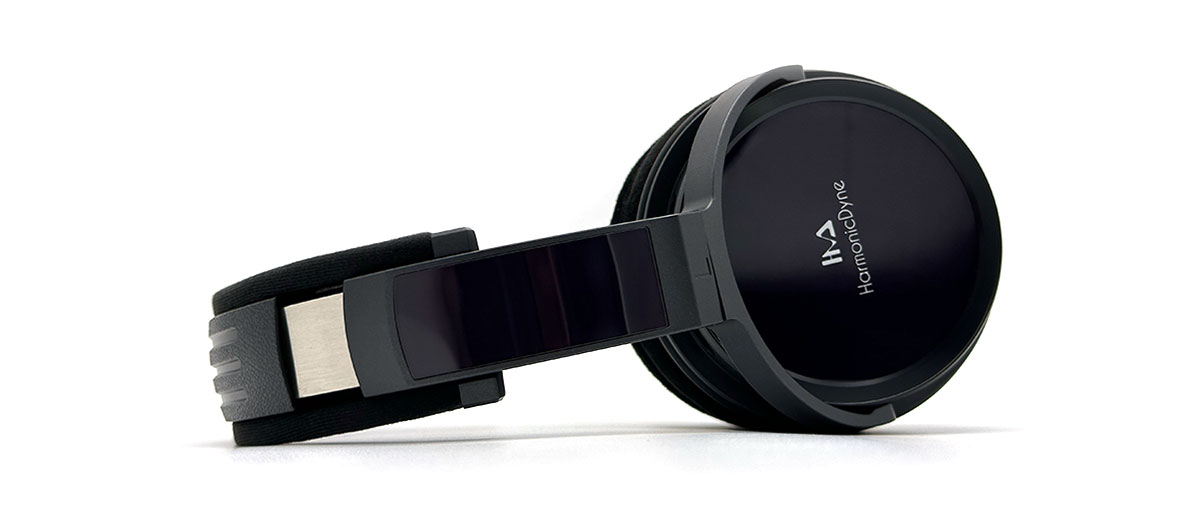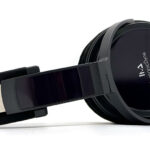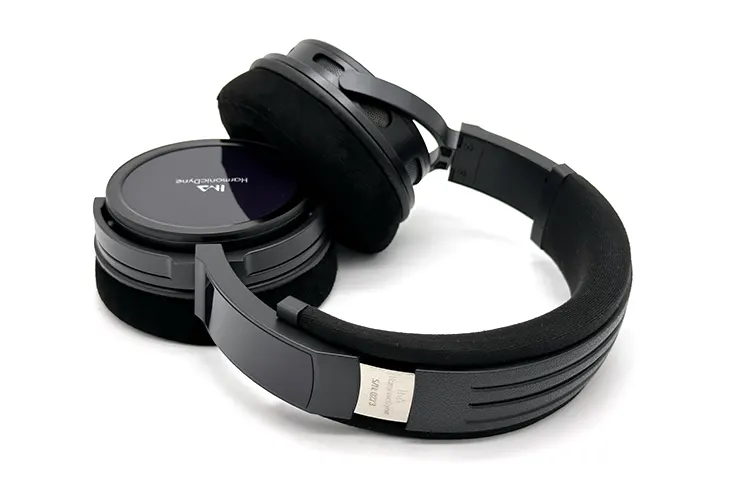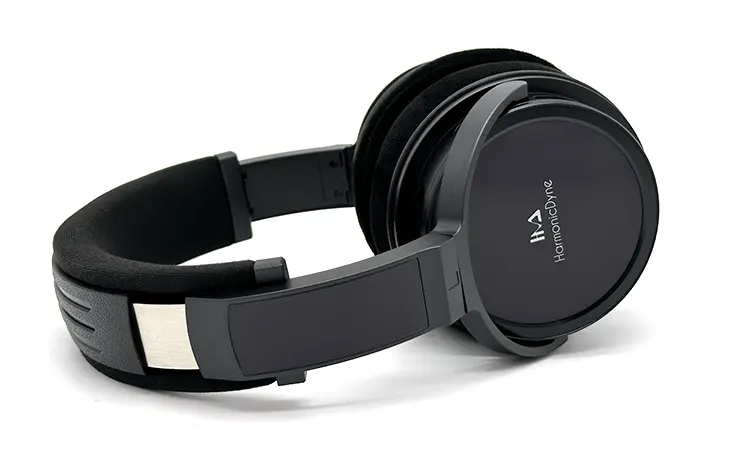In this feature, we review the HarmonicDyne Athena which is a studio-grade 50mm metal-ceramic composite dynamic driver headphone. It is priced at $179.00.
Disclaimer: This is a sample in exchange for our honest opinion. Headfonics is an independent website that does not have any affiliate links or status. We thank Linsoul for this opportunity.
To read more about HarmonicDyne products we have previously covered on Headfonics please click here.
Note, that this article follows our latest scoring guidelines which you can read up on here.
I thought HarmonicDyne was resting their Greek mythos naming scheme when they released the G200 recently. It turns out that they’re only separating their dynamic driver lineup from those using planar tech.
The relation of the Greek mythology wherein Athena is born from Zeus to the developmental process isn’t exactly explained. The open-back Zeus headphone however is a pioneer project for HarmonicDyne whose roots can still be seen in the Athena.
Adding character to its distinctive semi-closed back design, the Athena is also the first headphone to carry a female goddess name in the lineup of HarmonicDyne. It can’t be discounted that the creativity here is a welcome ripple in a sea of fully open headphones.
Tech Highlights
The Athena is eager to flex its tuning competency via a pair of 50mm dynamic drivers made over a blend of metal alloy and ceramic carbon fibers.
And integrated with this so-called Metal-Ceramic Composite Driver are ultra-fine voice coils and high flux magnetic enclosures which are attentively designed to make the diaphragm play tight and even.
With a free field frequency range between 10Hz and 70kHz, the Athena is set to compose studio-grade sound. HarmonicDyne placed a 3dB sub-bass boost in the sub-200Hz region and proudly emphasizes that the Athena has a treble peak matched to human hearing.
It may not be immediately obvious but the Athena is not your standard closed-back headphones. With an M-shaped side venting system, it allows for increased airflow within the driver housing. It claims to have a better result than the conventional solutions used by other cans.
Design
Those following HarmonicDyne would know that as popular as they may be in terms of producing great-sounding cans, the brand has also been hounded by criticisms in build quality and design.
And as a current owner of the Zeus headphones, I can tell that the Athena has now made a huge leap in this respect.
With a wider contact area and softer cushioning, the headband of the Athena is very subtly different from the series it belongs to. The biggest upgrade in features is the extension mechanism that clasps without fragility biting into position with a solid indication.
The Athena can lay flat in one direction while turning it towards the other will be more limited. Pivoting the cups downwards on the other hand won’t be a problem since it is only the top that is obstructed by the frame of the fork.
Probably fastened through clips or screws inside, the flat reflective face of the Athena maintains a tidy look. Touch it too often though and fingerprints will start to dull its sheen.
A part of what makes the Athena unique is the seven holes around each side of the cups. The area with the biggest punched hole is at the top and the inside is visible when peeking through.
The pads are made of suede with perforated leather lining the inside wall. They’re circular in shape and removable so finding a replacement in the aftermarket should be easy enough.
Comfort
In the middle of open and closed-back headphones, the vents of the Athena are plenty wide to affect isolation. With a slight lowering of volume, I can still easily hear outside noise filtered through a softer lens. This also means that music does bleed minimally toward the outside.
Having a wide and supple headband is what allows the Athena to be confident when worn. It has a lighter clamp in proportion to the weight of the device though so I find that it relies on the headband more putting more pressure on the top of the head than the area around the ear cushions.
HarmonicDyne uses a mix of suede and perforated leather for the ear cushions. They’re breathable and with enough room to not touch my ear. Note that the space inside is rectangular so the front and rear area is reduced making it a probable point of concern for those with larger ears.
Stock Cable
With every headphone release, HarmonicDyne usually includes a cable that is tailored with a few key traits that differentiate it from the previous. Given this, the splitter still has some similarities with the one on the Zeus and the 4-core braiding is on the looser side, but otherwise, there are a lot of positives here.
Compared to the Zeus and the G200, the thick wires on the Athena are much more supple and resistant to kinks. It is also very resistant to microphonics, which is always a good indicator of quality.
What it lacks compared with the other available balanced cables of HarmonicDyne are extra adaptors. To give it credit, stuck with a single-ended cable, it does make sense that it only needs a 3.5mm to 6.35mm adaptor.
Packaging & Accessories
There’s no need yet for a box cutter when opening the outer shipping container of the Athena. The packaging tape confused me covering where to look but there is a nifty pull tab to gain access to the much more presentable retail box.
HarmonicDyne went out of its way to make a magnetically shut enclosure that opens two flaps on either side. This is coming from an entry-level set punching below 200 bucks. I like how the Athena elevates itself through the simpler details.
The cans are immediately visible but the accessories taking up the upper portion of the space need to be taken out first. Inside are the manual, adaptor, cable, and carry case.
Also nestled in a pocket right at the center, there is a souvenir coin used to indicate the serial number of the device. It is properly substantial and has an aged aesthetic.
Sound Impressions
Summary
Obsessed in the discipline of its notes, I find that the Athena has been thoroughly studied to maintain a balanced pitch. It is capable of showing big and attractive images but looking at the overall picture the emotion and engagement do have a reserved personality.
It can get a bit heavy on busy passages with the micro-detail getting a bit masked, so there is power but lacking a little precision. I however don’t mind that the subtleties are sacrificed a bit here when this happens since the Athena still skillfully manages to have a clear point of instrument origin in a nicely cast stage.
Timbre
As expected of a set of cans with partly closed housing, picking up the bass is not a problem at all. The timbre hits thick especially with drums and broader strokes, barely getting breezier on tighter reverb. I find this somewhat addicting even though the sway of the punch is not very strong.
Bass guitars have a convincing twang since there is suppleness and well-cast dispersion to each pluck. Having this trait though pulls back on immediate transparency wherein detail could be glossed over.
The impression the Athena gives to the midrange is rich and mellow. I noticed this with female vocals with a wide dynamic range whose treblier notes ease into a smooth yet substantial depth lacking any sudden spike.
The Athena isn’t scooped so the precision and evenness with instrument placement is there. The softness in timbre only veils the echo creating feedback of less room than expected.
Electric guitars aren’t emphasized to grab attention so they play a bit more distantly than usual. Doing so does add some difficulties in creating a fetching appeal but it could be argued to be unnecessary if used in a professional setting.
Listening to some concertos, the Athena does well to catch the intricacies of notes and I enjoy the fleeting ringing of the violin. The crashing of cymbals demonstrates a metallic timbre with a crisp bite.
Staging & Dynamics
Don’t underestimate the effect of the M-shaped vents on the Athena since I’ve heard some openbacks out there with a considerably similar soundstage. Instruments can play where they want adding that the tuning is quite balanced and nothing jumps out in particular.
Still, the bass region is the easiest culprit to point at which could fill up a scene much easier than other frequencies. It won’t be guilty when it comes to bloat since other instruments can still breathe pretty well either way for easy isolation.
Images diffuse widely, which could be overwhelming at first but once adjusted there is a clear point in space where the instruments originate. The Athena for one has good image separation and placement making use of the entire range.
Click on page 2 below for sound impressions and our selected comparisons.







